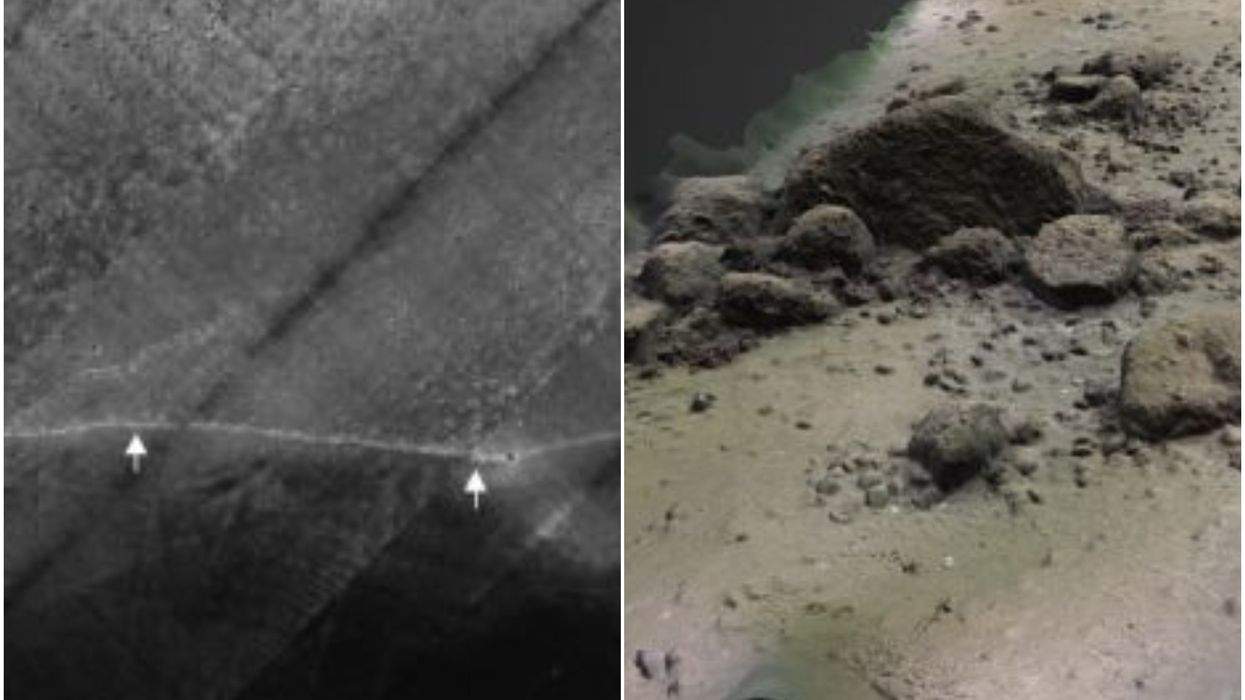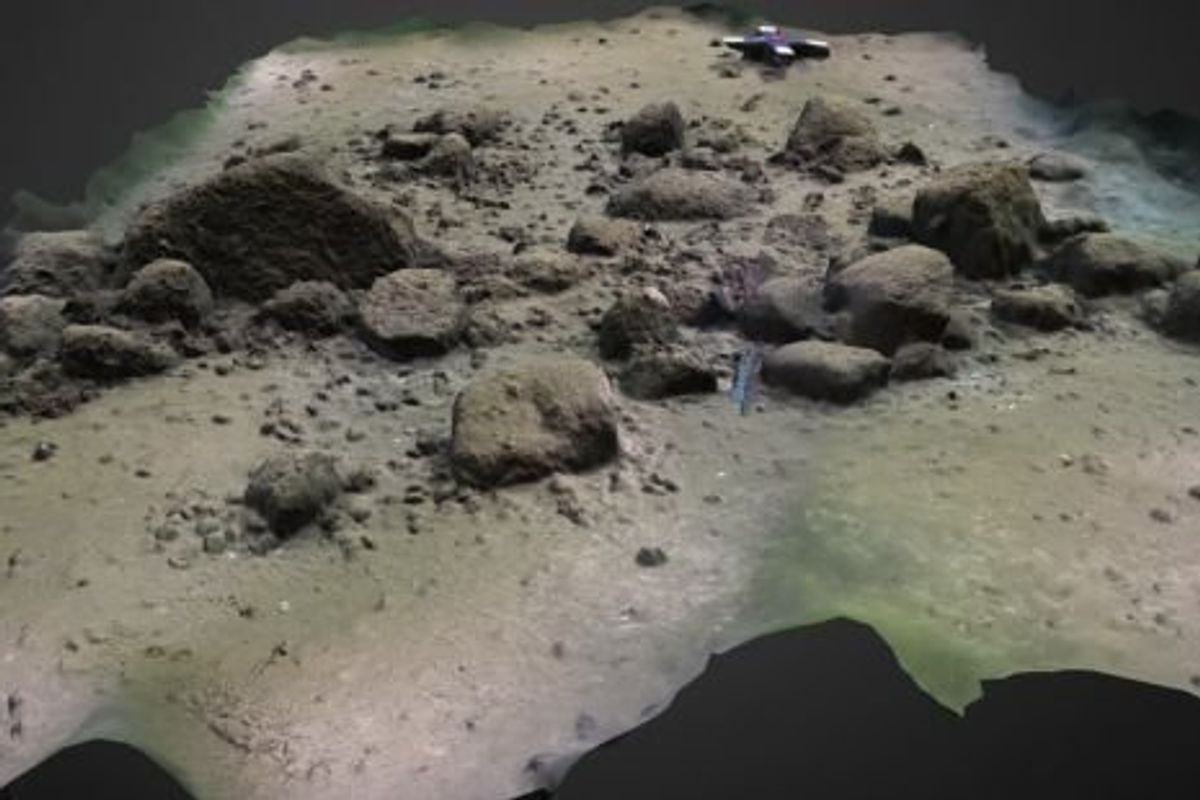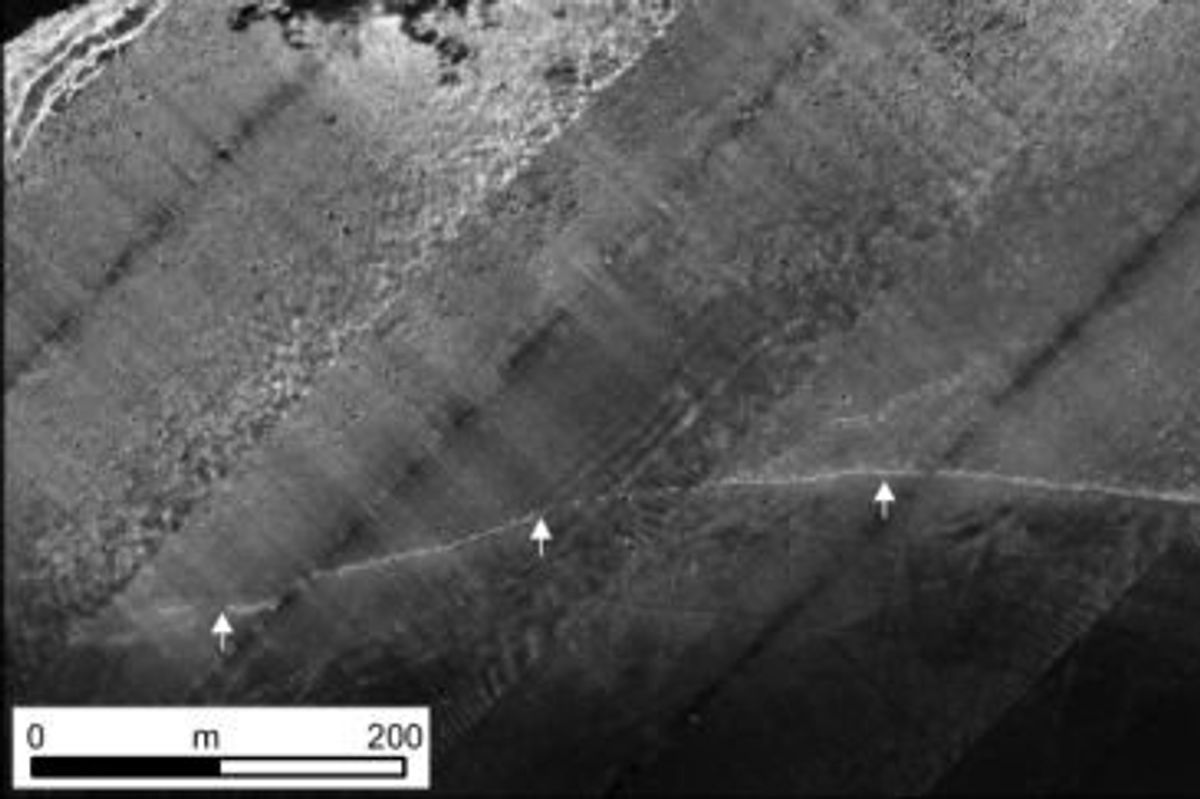Harriet Brewis
Jun 22, 2025

Left: white arrows point to the ancient wall in an undersea morphology of the region; and a section of the structure
A slice of history has been uncovered deep beneath the Baltic Sea, in what researchers have hailed as a “thrilling discovery”.
The ground-breaking find was spotted by happy accident in Germany’s Bay of Mecklenburg, by a team of researchers who were on a student trip.
The group were 10km (six miles) from shore when their multibeam sonar system picked up something lurking down below.
That something was a mysterious wall stretching nearly a kilometre along the seafloor, at a depth of 21 metres (69 feet).
Analysis has since revealed that the wall dates back more than 10,000 years, and may be the oldest known megastructure built by humans in Europe.
The mysterious structure consists of some 1,670 individual stones that appear to have been deliberately placed to join up some 300 larger boulders, according to Science Alert and the Guardian.
This suggests that it was constructed for a specific purpose, thousands of years before it was engulfed by the waves.

The researchers, led by geophysicist Jacob Geerson of Kiel University, believe the wall – which they have christened the Blinkerwall – was built by hunter-gatherers on land next to a lake or marsh back in the Stone Age.
"The site represents one of the oldest documented man-made hunting structures on Earth, and ranges among the largest known Stone Age structures in Europe," Geerson and his colleagues wrote in a paper, published in the PNAS journal.
Earth's land masses have undergone significant change over the millennia, thanks to sea level changes, erosion, tectonic movement, and other geological processes.
This means that countless former settlements have been swallowed up by the seas and oceans, taking their secrets with them.
However, new technologies are uncovering more and more of these once-lost windows into the past, and helping to shed new light on how our ancestors once lived.
In this case, even though the wall’s precise function will be hard to establish, experts think it most probably served as a driving lane for reindeer hunters.
“When you chase the animals, they follow these structures, they don’t attempt to jump over them,” Geersen explained.
“The idea would be to create an artificial bottleneck with a second wall or with the lake shore,” he added.

A second wall that ran alongside the Blinkerwall may lie buried within the seafloor sediments, the researchers also suggest in their paper.
The consistency and size of the 971 metre-long structure, suggest that it wasn’t created by natural processes.
The angle of the wall, which is generally less than a metre high, changes direction when it meets the larger boulders, which implies that the piles of smaller stones were intentionally positioned to link them up.
"Based on the information at hand," the researchers write in their paper, "The most plausible functional interpretation for the Blinkerwall is that it was constructed and used as a hunting architecture for driving herds of large ungulates."
Geerson and his colleagues believe that the wall was built more than 10,000 years ago, based on the age of surrounding features. And they think it was submerged beneath the cold waters of the Baltic around 8,500 years ago.
Despite the millennia that have passed since then, it has remained remarkably well-preserved, making it a valuable resource for understanding human history.
"The suggested date and functional interpretation of the Blinkerwall makes the feature a thrilling discovery, not only because of its age but also because of the potential for understanding subsistence patterns of the early hunter-gatherer communities," the team say in their study.
"The discovery of this kind of structure sheds light on many aspects of the regional hunter-gatherers, especially regarding their socioeconomic complexity.”
This article was originally published on 13 February 2024
Why not read...
This is how your pillowcase could be ageing you '10 years' overnight
Second 'hidden city' discovered under Giza's pyramids
Sign up for our free Indy100 weekly newsletter
Have your say in our news democracy. Click the upvote icon at the top of the page to help raise this article through the indy100 rankings
Top 100
The Conversation (0)













